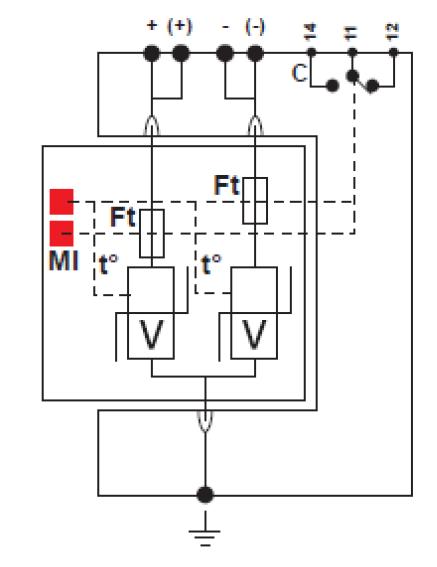What's critical for overvoltage protection is that your crowbar device(s) are able to blow the fuse/trip the breaker before failing themselves. Many fuses have datasheets that show how many amps and time to blow.
The datasheet for the overvoltage protection device in question will have a plot of how much volts and current and time or total energy they can handle.
I just tried to find a 250V, 100A fuse on Digikey. Alas, the biggest is 60A is their largest fast blow, 250V fuse and they have no data.
Most of the fuse data I've seen for lower current fuses makes me think that double the rated current is going to take like a few seconds to blow. The design problem is that the PV array, directly through a failed MPPT or PWM buck converter can't provide that much current into a short curcuit. A bit less than the rated SC panel current. The MPPT/PWM regulator was boosting current while reducing voltage.
So my solution of a standard crowbar overvoltage is not going to blow the fuse for the situation of HV array, MPPT fail, unless the MPPT controller is set to limit current about half the PV short circuit current, and the fuse is just over that. But, if the SCR type crowbar is rated well above the total short circuit PV current (the SC current of each series string added to each parallel string), then it will keep the PV panels shorted out indefinately, something that the earliest PV charge controllers did. I don't like this as well as blowing a fuse, so I'll keep thinking and hope to come up with a better solution.
BruceM
The datasheet for the overvoltage protection device in question will have a plot of how much volts and current and time or total energy they can handle.
I just tried to find a 250V, 100A fuse on Digikey. Alas, the biggest is 60A is their largest fast blow, 250V fuse and they have no data.
Most of the fuse data I've seen for lower current fuses makes me think that double the rated current is going to take like a few seconds to blow. The design problem is that the PV array, directly through a failed MPPT or PWM buck converter can't provide that much current into a short curcuit. A bit less than the rated SC panel current. The MPPT/PWM regulator was boosting current while reducing voltage.
So my solution of a standard crowbar overvoltage is not going to blow the fuse for the situation of HV array, MPPT fail, unless the MPPT controller is set to limit current about half the PV short circuit current, and the fuse is just over that. But, if the SCR type crowbar is rated well above the total short circuit PV current (the SC current of each series string added to each parallel string), then it will keep the PV panels shorted out indefinately, something that the earliest PV charge controllers did. I don't like this as well as blowing a fuse, so I'll keep thinking and hope to come up with a better solution.
BruceM




